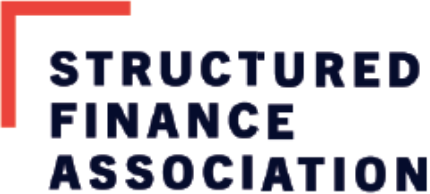The Effects of COVID-19 on College Enrollment and Student Loan Repayment
Provided by Structured Finance Association
The “new normal” seems to change every day in response to the COVID-19 pandemic. U.S. college enrollment is of particular importance as the fall semester begins.
The National Association for College Admissions Counseling recently noted that colleges and universities are being forced to reinvent the college admissions process, which hasn’t changed in over 50 years, in the span of a couple of months. School closures and disruptions to financial aid, testing, and admission events, have all impacted the admissions process, contributing to the decreased overall of college enrollment.
A survey released in July of 2020 by SimpsonScarborough found that “40% of incoming freshmen say it is likely/highly likely they will change their mind about the school they have chosen to attend this fall.” Many factors contribute to this change, with cost cited as a significant factor given current discussions around virtual learning and its effect on the “cost-to-value” ratio for more expensive schools.
Due to this increased uncertainty around education enrollment, with many students opting to take gap years or explore cheaper alternatives, LendEDU notes that 2020 might be the “most uncertain year ever” for private student loan lenders. Their annual study tracks hundreds of thousands of data points around proprietary private student loan data to find trends.
Some highlights from the July 2020 LendEDU report:
- $131 billion in outstanding private student loan debt across more than 100 private lenders.
- At the lowest level in 5 years, the average funded private student loan amount in 2020 is $11,279. This is down from the 2019 average of $13,954 and even more significantly from 2016 average of $16,285.
- In 2020, the private student loan approval rate has been 22%, after declining to 16% in 2019.
Harvard reported in early August that more than 20% of its first-year students are deferring enrollment. Of course, there are many downsides to delaying college by a year: specifically, the potential loss of $90,000 in lifetime earnings, according to a recent study from economists at the Federal Reserve Bank of New York.
As colleges and universities begin to report their initial enrollment figures for the fall semester of 2020, both increases and decreases in enrollment trends can be seen across the country. Forbes recently highlighted some examples of what’s being reported so far in the U.S.: Georgia State University, Oklahoma State University, the University of Wyoming, Purdue University, and Wayne State University are just a handful of some larger universities reporting enrollment increases. On the other hand, various campuses of the City University of New York point to a 4.4% enrollment decline for the fall semester while the 64-campus State University of New York system are seeing enrollment down 5% compared to last year. Other schools including Iowa State University, Sothern Illinois University, Missouri State University, City College of San Francisco, and San Francisco State University are also seeing decreased enrollment. Most institutions are expected to have reported their final, official enrollment figures by the end of September.
Payment Relief Programs, High Unemployment and their Impact on Student Loan ABS
S&P Global Ratings expects increased forbearance level trends across all student loan types to continue through at least September 2020 as borrowers request, and servicers extend, temporary payment relief. “Spurred by the U.S. Department of Education’s (ED’s) six-month suspension of interest and principal on federally owned loans, many private and Federal Family Education Loan Program (FFELP) student loan servicers are offering similarly structured relief to borrowers”, according to S&P Global Ratings. The Presidential executive action on August 8 continuing the moratorium on monthly federal payments through the end of the year may lead to further private student loan relief as well.
For private student loan ABS specifically, DBRS Morningstar (DBRS) reported the percentage of loans in forbearance was 12.0% of the repayment balance in Q2 2020 on average, almost a 4x increase from the Q1 2020 average of 3.1% and 6x increase from the 1.9% average in Q2 2019. The percentage of loans in forbearance was 11.7%, 14.3%, and 10.0% in April, May, and June 2020, respectively. Again, the Q2 2020 increase is linked to the continued impact of the coronavirus on the national unemployment rate and job market. While elevated forbearance levels are expected to continue into the next quarter, DBRS expects levels to decline over time as coronavirus forbearance programs are phased out and the country continues to reopen for business.
Beyond the higher levels of forbearance, the closure or reduced demand of many businesses across the country raises employment challenges for student loan borrowers likely resulting in higher levels of delinquencies and defaults. Against this backdrop, S&P Global Ratings expects that student loan ABS transactions have sufficient liquidity and structural protections to pay ABS note interest on time even under their currently assumed levels of loan forbearance. However, with a high correlation between performance of private student loan ABS and the unemployment rate, DBRS reports the possibility for delayed principal and interest loan payments that may affect private student loan ABS cash flows. Likewise, S&P Global Ratings believes that non-investment grade legacy private student loan deals are most at risk of downgrades if performance worsens.
The COVID-19 pandemic will have far reaching impacts on the global economy. SFA and its members are working diligently to support the functioning of our country’s capital markets, and the protection of the consumers and communities our members serve. If you would like to join SFA’s Student Loan ABS Committee, please submit a request.

